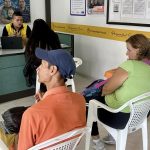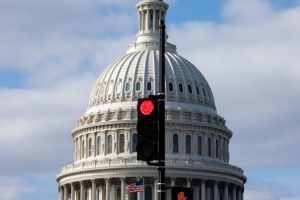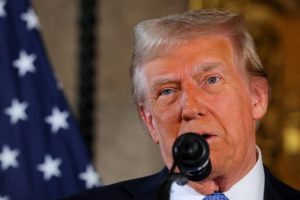Santo Domingo, the capital of the Dominican Republic, will be the scene of the meeting between 22 countries, both from the European Union and Latin America. Various heads of government, such as Pedro Sánchez, from Spain; Alberto Fernández, from Argentina or Gabriel Boric, from Chile, will meet to discuss the environment and food safety, among other topics. The Summit also wants to be the meeting point between the two regions, whose relationship had been oxidized in recent years.
Two days should be enough for the broad agenda that brings together the Spanish and Portuguese-speaking countries of Europe and Latin America this week. The 28th edition of the Ibero-American Summit will take place on March 24 and 25 in Santo Domingo, the capital of the Dominican Republic, and seeks to find common responses to global challenges: the climate crisis, food security, rights in the digital world or the International Trade.
In total, there are 22 states that make up the international organization. However, it is expected that fourteen heads of state and government will attend the summit in a meeting that is also the first since the normalization of travel and face-to-face events after the Covid-19 pandemic. The previous edition, held in Andorra in 2021, still took place in the midst of strong health prevention.
Without the definitive list of leaders who will attend the meeting, there are some confirmed presences, such as those of the Spanish president, Pedro Sánchez, and the King of Spain, Felipe VI. The Argentine president Alberto Fernández and his Chilean counterpart Gabriel Boric will also travel to Santo Domingo. On behalf of the European Union, Josep Borrell, its High Representative for Foreign Affairs, will attend the meeting. At the same time, there are absences that resonate like the Salvadoran president Nayib Bukele -who will be represented by his vice president- or the president of Brazil, Luiz Inácio ‘Lula’ da Silva.
On March 24 and 25 in Santo Domingo, the Dominican Republic will host the XXVIII Ibero-American Summit of Heads of State and Government in which the 22 Ibero-American countries will participate. pic.twitter.com/bcnKxBndKr
— Ibero-American Summit (@CumbreIberoA) March 16, 2023
Beyond the specific agenda of the summit, this Ibero-American meeting takes place against a backdrop that will be present in all conversations: the relaunch of relations between the European Union and Latin America. After several years of silence and disagreements, for example around the trade agreement between the European bloc and Mercosur, it is expected that the bridges will be built again on this occasion, especially taking advantage of Spain’s presidency of the Council of the European Union in the second half of 2023.
Environment and food safety, two axes of the Summit
The motto of the Summit offers clues about some of the cornerstones of the meeting: “Together for a just and sustainable Ibero-America.” Climate challenges, as well as food security, are two of the axes that will guide the high-level multilateral dialogues. In fact, the countries are expected to sign the Ibero-American Environmental Charter, a non-binding document that seeks a common roadmap to deal with global warming and the loss of biodiversity and resources.
Hunger in Latin America will also be the protagonist of the meeting. More than 267 million inhabitants of the region live in food insecurity, which is equivalent to 40.6% of its population, according to the latest report published by the Food and Agriculture Organization of the United Nations (FAO). The states will define a joint action plan to solve it, with an emphasis on innovation and investment in the rural world.
This point will also be key for relations between Latin America and the European Union, which, as a result of the war in Ukraine, seeks to diversify the options for supplying food and resources with the aim of depending less on the so-called “breadbasket of the world”. .

Technology and finance, under debate
Another topic on the official agenda is the Charter of Digital Principles and Rights, a commitment that is not binding but could become the first to be signed internationally in this area. The objective is to preserve fundamental rights in digital environments and serve as a reference framework for national legislation.
In addition, the states will debate around the current financial system with a view to issuing a Special Communication on International Financial Architecture that calls for building a “more fair, inclusive and sustainable” alternative. The debt yoke weighs on many Latin American countries and threatens to hinder an economic recovery that is already expected to be difficult in a post-pandemic context, compounded by the impact of the war in Ukraine.
The Dominican Vice Minister of Multilateral Foreign Policy, Rubén Silié, justified the importance of this debate because the current financial architecture “does not take into account the crisis situation that Latin American countries are experiencing” nor “adequately responds to their debt situation”. The Dominican Republic is precisely the driving force behind this axis of debate at the Summit.
European Union and Latin America: old new friends?
Beyond the points set out in the official agenda, which are debated on the surface, at summits like this one there are always more issues that move at a phreatic level and that mark the conversations between the heads and representatives of the governments present. The national and geopolitical context is inevitably present in high-level meetings.
One of the main commitments of the Ibero-American Summit is to link Latin America with Europe again. At a time when divisions between the West and Russia have deepened as a result of the war in Ukraine, the old continent wants to make sure that the Latin American region, which has remained relatively unaffected by the conflict, sees the European Union as a partner essential.

Adding to European concerns is China’s economic influence in the region, which has grown in recent years to become the main trading partner of most Latin American countries. To build a containment dam, the leaders on both sides of the Atlantic will seek to speed up the negotiations for the trade agreement between the EU and Mercosur (the common market that includes Argentina, Brazil, Paraguay and Uruguay), while the bilateral treaties with Chile and Mexico.
Along the same lines, the Ibero-American Summit becomes the prelude to the next meeting between the Community of Latin American and Caribbean States (CELAC) and the EU, to be held in July this year, after eight years away.
Migration and security go through the Ibero-American Summit
Another axis that crosses the region in a common way is migration and, despite the fact that it does not appear on the official agenda, there are leaders such as Gabriel Boric who have already declared their intentions to address it with their counterparts. In the Chilean case, the main concern is the Venezuelan migration that arrives in the country through Bolivia, but it is not the only case of flow of people where human rights and security intersect: the border between Colombia and Panama has become at a critical point for international migration and the ambassador of the Summit, the Dominican Republic, also faces a complex situation with its neighbor, Haiti.

Boric’s response to migration in his country has been to increase militarization: he posted 600 troops on the country’s northern border and wants each person who arrives irregularly “to be redirected from where they came from,” in his own words. Apart from the particular national contexts, it is the same response that many Latin American leaders have adopted to recent domestic challenges.
For example, the management of the Salvadoran Bukele against organized crime has been based on mass incarcerations protected by the state of emergency, a policy that raises questions about human rights. Along the same lines, Guillermo Lasso, President of Ecuador, has hardened his discourse on security and the response to prison violence in the country, while the international community is considering reinforcing the Haitian police and army to deal with to the armed bands that control vast territories of the country.
It continues to be a defining moment for the region: with an inequality aggravated by successive economic crises that is hidden, on many occasions, as the ultimate cause of violence, will it seek to respond with social policies or by toughening up the security forces? With old and new divisions showing up on the global map, can it emerge as a stable trading partner or will it be punished for its governance problems? Faced with a challenge of the magnitude of climate change, will it be able to rise to the challenge and be an example of a sustainable region or will it follow the marked path of runaway industrialization?
Still without certainties, the Ibero-American Summit could become, at least, the beginning of these responses that put Latin America and its relationship with Europe in front of the mirror.














